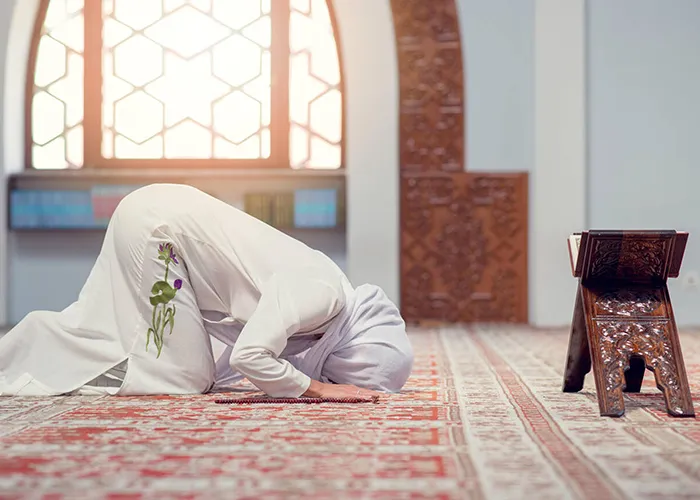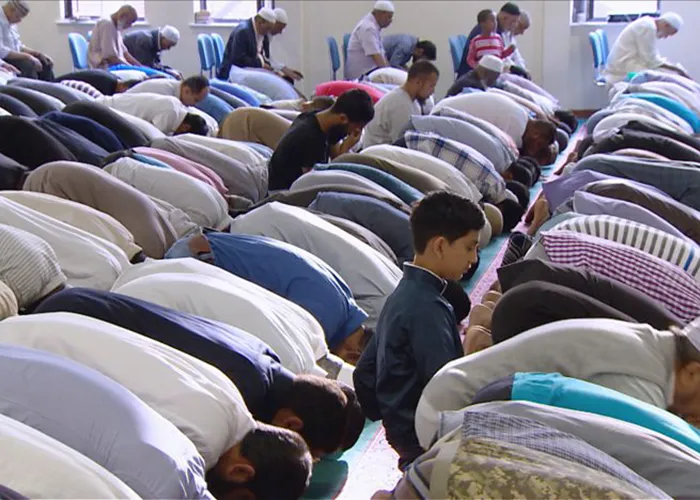Fatwa Panel of the Week – Volume02 Issue27
Rulings Related to the Clothing:
Definition of Clothing:
Clothing refers to any material that covers the parts of the body which are religiously required to be concealed (awrah) in a way that prevents the colour of the skin from being visible and is not so tight or transparent that it exposes the body shape to the degree that invalidates prayer.
Here are the rules related to the clothing, according to the fatwas of the Grand Religious Authorities:
Grand Ayatollah Khamenei, Grand Ayatollah Sistani, and Grand Ayatollah Makarem Shirazi (may their eminence be preserved)
Clothing in Obligatory Prayers
| Ayatollah Khamenei | Ayatollah Sistani | Ayatollah Makarem Shirazi |
| 1. In obligatory prayers and their
branches, such as the prayer of precaution (ṣalāt al-iḥtiyāṭ) and makeup of missed parts, and based on obligatory precaution in the two prostrations of forgetfulness (sajdatayn al-sahw), the body must be covered. 2. The obligation of covering in prayer is not limited to the Presence of non-Mahrams; even if no one is present, covering the body is a condition for the Validity of prayer. |
1. When a person offers the forgotten Sajdah or tashahhud, he should cover himself in the same manner as in prayers, and the recommended precaution is that he should also cover himself at the time of offering Sajda-e-Sahv.
2. Same as Ayatollah Khamenei’s Fatwa. |
1. Same as Ayatollah Khamenei’s Fatwa.
2. Same as Ayatollah Khamenei’s Fatwa. |
Clothing in Funeral and Recommended Prayers
| 1. In the funeral prayer (ṣalāt al-mayyit), covering is not obligatory, though it is recommended as a precaution.
2. In recommended prayers as well, just like in obligatory ones, covering is a condition for the validity of prayer. |
1. Covering the body is not a condition for validity of Ṣalāt al-Mayyit.
It can be performed even without proper clothing, if not available (e.g., without full body coverage or head covering). Tahārah (purity) of the body and clothing is not required. Even if the clothes are ritually impure (najis) or made of haram material, the prayer remains valid. Wearing silk or clothing made from the parts of haram animals (like predatory animals) is also permissible, even for men. Usurped (ghasbi) clothing, however, is not allowed, as it involves forbidden use of others’ property and invalidates the prayer. 2. Same as Ayatollah Khamenei’s Fatwa. |
1. There is no specific requirement for covering the body in Ṣalāt al-Mayyit (the funeral prayer).This means that if, for example, part of the body of a person performing the prayer is not fully covered—especially in special or emergency situations—their prayer is still valid, unless another forbidden act, such as deliberate improper hijab, is involved.
2. Same as Ayatollah Khamenei’s Fatwa. |
The extent of covering required in prayer for men
| 1. A man must cover his private parts (the front and back) during prayer, even if no one can see him.
It is recommended that he also covers the area from the navel to the knees. |
1. A man must cover at least the private parts, i.e., from the navel to the knees.
However, it is recommended (mustahabb) to cover more of the body out of modesty and respect for prayer. Praying in shorts that expose the thighs or without a shirt (even in private) is discouraged though not invalid if the private parts are covered. |
1. Same as Ayatollah Khamenei’s Fatwa. |
The extent of covering required in prayer for Women
| 1. A woman must cover her entire body and hair during prayer. However, covering the face (to the extent that it is obligatory to wash in wuḍū), the hands, and the feet up to the wrists and ankles is not required. However, if a non-Maḥram (unrelated man) is present, the feet up to the ankles must also be covered. The chin is considered part of the face, and it is not obligatory for a woman to cover it during prayer. |
1. A woman must cover her entire body, except the face, hands up to the wrists, and feet up to the ankles.
The head, neck, arms, and legs must be fully covered. The clothing must not be transparent and should not show the shape of the body. Even if she is alone or in a women-only space, the required covering must be observed during prayer. |
2. Same as Ayatollah Sistani’s Fatwa. |
Additional Notes for Women:
- Wearing a long, loose chador or a full-body garment is customary and highly recommended.
- Makeup should be avoided in prayer unless the woman is alone and no one can see her.
- Even if a part of the body that must be covered becomes exposed during prayer, the prayer becomes invalid if not corrected immediately.
editor's pick
news via inbox
Subscribe to the newsletter.




